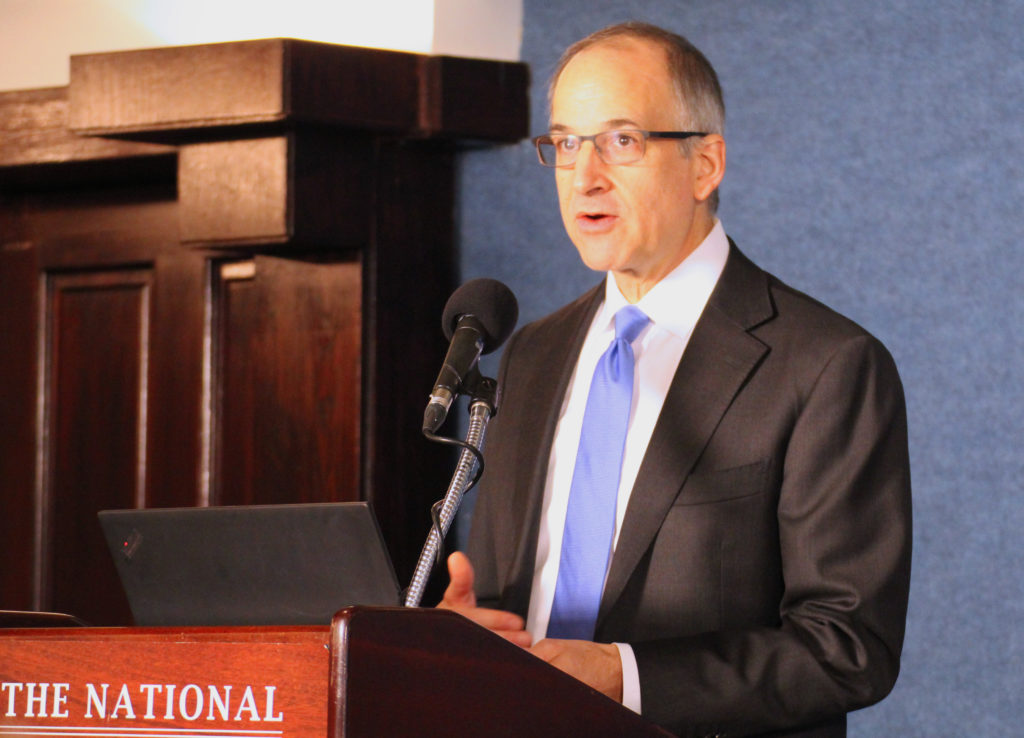Community colleges are the most common destination for adults who years ago left college without earning a credential but now are coming back, according to a new report from the National Student Clearinghouse Research Center. Public two-year colleges also are the largest single sector awarding credentials to these students.
A local community college was the first or second most common institutional choice for returning adult learners who didn’t have a college credential, regardless of the type of institution at which they last enrolled, the report said. As a result, the most common credentials earned by returning adults were associate degrees or certificates (60 percent among new completers).
“Taken together, community colleges serve as the major routes of initial entry, re-entry, and completion on the postsecondary education pathways for ‘Some College, No Degree’ students,” the report said. “In other words, not only are community colleges indispensable to the process of broadening postsecondary access to diverse students, but they also could have a significant effect on reaching a state’s postsecondary attainment goal.”
The big picture
Overall, there are 36 million people in the U.S. identified by the center as having “some college, no degree” — a 22 percent increase from 29 million in 2013. However, there is some promising news: 3.8 million of them returned to college in the last five years, with about 940,000 earning their first undergraduate credential, the report said. Another 1.1 million are still enrolled and pursuing a credential.

Doug Shapiro, executive director of the National Student Clearinghouse Research Center
“The returning students and new completers identified in this report should be celebrated, but they have been mostly invisible until now,” said Doug Shapiro, executive director of the National Student Clearinghouse Research Center (NSCRC), noting that graduation rates typically used to measure college performance count these students as dropouts and ignore them when they return.
Although the 36 million number is staggered, education advocates and researchers note there’s a positive side: that’s a huge pool of potential students to help upskill their skills or prepare them for new jobs. It’s also a promising pool of students for colleges struggling with enrollment, and for businesses desperate for qualified workers, NSCRC noted.
Many community colleges have already identified adult learners as a population on which they need to focus, especially given that demographic data indicate fewer high school graduates in the coming years. States like Virginia already have zeroed in on adult learners, in particular those who don’t have a college credential but who would economically benefit from having one.
Who are they?
NSCRC’s deep dive shows that most students with some college but no degree are middle age — the median age is 39; average age is 42 — and they were usually in their 20s or younger when they last enrolled in college. The typical “SCND” (some college, no degree) student left college 10 years ago — circa 2008 — after a short college career (enrolled for two years or less), often at a local community college, the report said.
Community colleges were also the starting and last-enrolled institution for two-third (67 percent) of SCNDs. In 37 states, more than half of SCNDs were last enrolled at a community college.
State breakdowns: The NSCRC website includes detailed state data and select state profiles.
The report also noted what it called “potential completers,” defined as returning college students with no earned credential who were previously enrolled for at least two years in college. They were more likely than other former students to re-enroll and finish college. This is the most relevant group to target for efforts to increase enrollments and reach attainment goals, NSCRC said.
“Potential completers are a more distinct group of younger students with more recent enrollments, who followed more diverse education pathways involving multiple types of institutions and more stop-outs,” the report said.
NSCRC also looked at the most common major fields among SCNDs who completed a credential. The most popular majors for those who earned an associate degree were: liberal arts, general studies, humanities (41 percent); followed by business management (14 percent), and health professions and related services (14 percent); and security and protective services (5 percent).
Researchers discussing the findings at a press event on Wednesday said they found it surprising that more of these students didn’t go into high-demand careers, such as healthcare. But several education advocates speaking at the event said that it’s likely because the students initially selected a major and degree that was easier for them to acquire.
“It’s the path of least resistance,” said Sally Johnstone, president of the National Center for Higher Education Management Systems, explaining that some of the healthcare programs, for example, have a higher academic bar, which could be initially intimidating for returning students. She added that adults often return to complete a credential because it is job-related. Usually they need it for a promotion or to change jobs, she said.
Breaking down barriers
One way for colleges to better serve SCNDs is to revamp policies and procedures — typically developed to serve younger students — to make it easier for older students to re-enroll, the report said. That includes examining student support services, childcare, credit transfer, class scheduling and financial aid, it said. These challenges were likely why about 94,000 returning adult learners — comprising 10 percent of all new completers — opted to earn their credential online, the report added.
Just something seemingly simple, such as getting grades from a previous college, can trip up returning students, said Hadass Sheffer, president of The Graduate! Network, who spoke on the panel at Wednesday’s event. Some colleges won’t release transcripts to former students who owe them money, she said.
“Institutions are trying to hold on to people who are not going to be successful” at their college, Sheffer said, adding that those colleges should work with the students to help them find a college that suits them better.
Other colleges might not know that certain policies and procedures are problems for these students, said Leanne Davis, assistant director of applied research at the Institute for Higher Education Policy. She recommended that colleges examine their student data to uncover potential barriers.
It’s not always the obvious things, Johnstone added. For example, there’s a state that requires all college students to show proof of inoculations before they can enroll. Older returning adults may see that as a hassle and decide not to enroll, or they may enroll in online courses.
Emerging practices
Despite the barriers, a growing number of colleges are paying closer attention to the needs of these students. Davis cited Shasta College in rural northern California, which developed its Accelerated College Education program to make it easier for working students to attend full time. The college then saw that students completing the program wanted to continue with their education, so it created an online program called Bachelor’s through Online and Local Degrees (BOLD).

